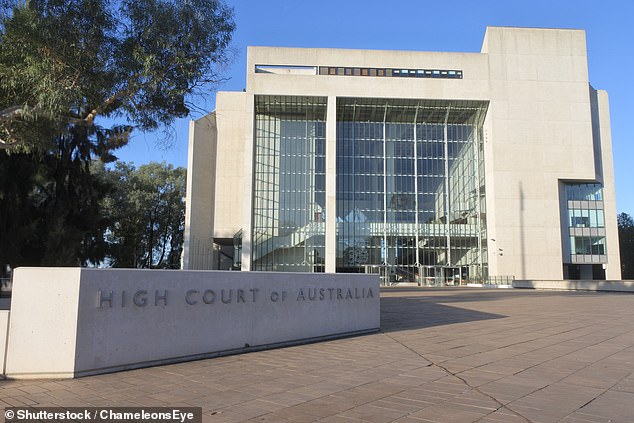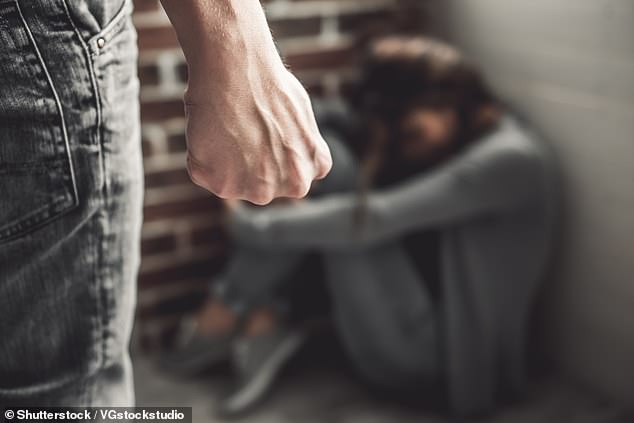A convicted human trafficker and a violent domestic abuser have become the latest immigrants to be released from detention.
The Iranian men, known only as Adam and David, were released on February 28 after the High Court ruled in November that indefinite detention was unlawful.
More than 150 immigrants have been returned to the community since the ruling, including murderers, pedophiles and violent criminals.
David had spent five years in an immigration detention center for contravening a family violence order by attacking his ex-partner with a knife, a wooden board and a pillow.
Adam was released despite being sentenced to seven years in prison in 2015 for human trafficking.
A man convicted of violent domestic abuse (file image) and another convicted of human trafficking are free in public after being released from indefinite detention.
Both had refused to cooperate with attempts to return them to Iran for fear they would be persecuted for their Christian beliefs.
The Federal Circuit and Family Court of Australia ruling revealed that David arrived in Australia illegally on a boat and had his visa taken away after the DV attack.
He was found guilty of false imprisonment, three counts of assault with a weapon, threatening to kill and unlawful assault and was given a family violence order.
David broke the order when he “entered the victim’s locked home, doused the bedroom with gasoline, and physically and sexually assaulted her.”
He spent 30 days in prison before his visa was revoked and he was taken to an immigration detention center, where he was physically and sexually assaulted.
He would continue to reject any attempt to acquire the relevant travel documents and return to Iran, claiming that the country would not accept him and that he is stateless.
David also fears he could face 11 years in prison in Iran after being found guilty of “insulting Iranian authorities and acting against Iran’s national security and membership in enemy groups.”
Judge Amanda Mansini said the court was bound by the High Court ruling in November and that David was not “lawfully detained and is entitled to be released immediately.”
“This form of relief is not final because it does not entitle David to indefinite freedom to live in the Australian community,” Judge Mansini said.
The other man, Adam, was two and a half years into his seven-year sentence for human trafficking when he was released.

Both were released under the pretext established by a Superior Court ruling (pictured) that deemed indefinite detention illegal and that has allowed 153 non-citizens to be released.
He had already been living in Australia on a refugee visa for several years before his conviction after registering with the UN in Indonesia in 2001.
In June last year, an Administrative Appeals Tribunal found that Adam was a key organizer of a human trafficking operation involving 12 people.
Another month was added to his sentence for a “business assault” charge before he was transferred to an immigration detention center.
The court found that Australia likely owed protection to Adam, however no formal conclusion was reached on his immigration case.
It also determined that he could not be returned to the country because he is part of the Mandean minority, a persecuted Christian group in Iran.
The Commonwealth said both men should not be forced to comply with the High Court’s earlier ruling on NZYQ because they were not part of the group of detainees affected.
He argued that the men did not cooperate with officials to return to their home country, while other released detainees could not be deported even with cooperation.

